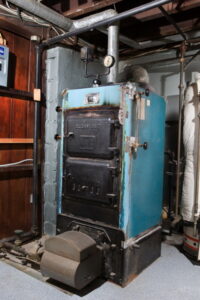
We never want to be alarmist about home heating systems, but it’s important to make sure our customers know about potentially harmful issues that can crop up in natural gas furnaces.
Modern gas furnaces are built with safety uppermost in mind, so they rarely present dangers to homes. If they did, they wouldn’t even be permitted in homes! However, we want you to be aware of a situation that may occur with your gas furnace if it doesn’t receive regular maintenance and prompt heating repair in Marrero, LA. It’s the cracked heat exchanger.
What’s a Heat Exchanger?
The heat exchanger is the part of a furnace where heat transfers into the air that moves through the HVAC system and on to the rooms. A gas furnace generates heat by combusting natural gas, and this hot gas cannot come into direct contact with the air. Instead, it collects inside a metal container—the heat exchanger—where it raises the temperature of the metal. The blower fan sends currents of air around the exchanger, where the heat of the metal raises its temperature. The warm air goes into the ductwork, and the exhaust gas is safely vented out a flue to the roof.
Why a Cracked Exchanger Is a Problem
You can probably imagine what might go wrong if there are cracks in the exchanger: the combustion gas will seep out and get into the air. This combustion gas is toxic, containing carbon monoxide, and this can be harmful if it enters the living spaces of the house through the vents. The crack doesn’t even have to be large; as the exchanger heats up, the metal expands and can cause the crack to open wide enough to permit gas to escape.
Why Cracks Can Develop
Cracks are more likely to appear on the heat exchanger of an older furnace (more than 15 years in service). Years of the metal expanding weaken it. But the biggest culprit for cracks in the exchanger is corrosion due to exposure of the metal to gas vapor. If the furnace hasn’t been venting properly, this process will speed up.
How to Tell There’s a Heat Exchanger Crack
The best way to discover this problem is with regular maintenance each fall for the furnace. Our technicians carefully inspect the heat exchanger during the maintenance visit to look for signs of corrosion or where cracks have already started. We can help see if the furnace is repaired or arrange to have it replaced before the crack can create hazards.
A clicking sound from the furnace after the blower shuts off can also indicate a cracked exchanger. The clicking sound could come from other malfunctions, so we recommend you shut off the furnace and call us no matter what.
Finally, make sure you have carbon monoxide detectors in your house and they’re working. This will warn you if a cracked heat exchanger does allow gas to escape. Shut off the gas and leave the house, then call the utility company. Later, when the danger is passed, you can call us for the repair or replacement services necessary for a safe furnace.
Call Gowland’s Heating & A/C for your heating repair needs. We believe in “relationship over revenue!”

